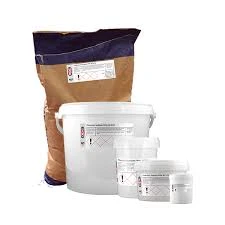
acetic acid food preservative
Acetic Acid as a Food Preservative A Comprehensive Overview
Acetic acid, a simple carboxylic acid with the chemical formula CH₃COOH, is widely recognized for its role in food preservation and safety. Found naturally in vinegar, acetic acid has been utilized in culinary practices for centuries. Its effectiveness as a food preservative stems from its ability to inhibit the growth of various microorganisms, including bacteria, molds, and yeasts, thereby extending the shelf life of food products.
The primary mechanism through which acetic acid acts as a preservative is through lowering the pH of food products. Most bacteria thrive in a neutral pH range (around 6.5 to 7.5), while acetic acid contributes to a more acidic environment, typically below pH 4.6. At this acidic level, many pathogens and spoilage organisms find it challenging to survive and reproduce. This makes acetic acid particularly beneficial in preserving foods like pickles, sauces, and condiments.
Acetic Acid as a Food Preservative A Comprehensive Overview
Beyond pickling, acetic acid is employed in a variety of food products, including salad dressings, marinades, and sauces. Its antimicrobial properties help ensure food safety and prevent spoilage, making it an invaluable ingredient in the food industry. Manufacturers often use acetic acid in combination with other preservatives to maximize effectiveness, as this synergy can provide a more robust defense against microbial growth.
acetic acid food preservative

Despite its benefits, the use of acetic acid as a food preservative is subjected to regulatory scrutiny. The U.S. Food and Drug Administration (FDA) and other international bodies have established guidelines and acceptable usage levels to ensure safety for consumers. Generally recognized as safe (GRAS), acetic acid must be used within specified concentrations to prevent adverse effects, such as irritation or gastrointestinal discomfort when consumed in large quantities.
In recent years, the demand for natural and clean-label ingredients in food products has surged. Consumers are becoming increasingly vigilant about artificial additives and preservatives, pushing manufacturers to seek natural alternatives. Acetic acid, originating from vinegar, is deemed a more natural preservative option that aligns with this trend. It caters to health-conscious consumers looking for cleaner food choices without sacrificing taste and safety.
However, the popularity of acetic acid extends beyond food preservation. It is also recognized for its potential health benefits, including its ability to regulate blood sugar levels and improve digestion. Some studies suggest that vinegar consumption may lead to lower blood sugar spikes when taken with meals. While more research is needed to substantiate these claims, the broad applications of acetic acid go beyond merely preserving food.
In conclusion, acetic acid is a versatile and effective food preservative that plays a pivotal role in enhancing food safety and extending shelf life. Its ability to create an acidic environment inhibits microbial growth, making it indispensable in various food products. As consumers increasingly embrace natural food preservation methods, acetic acid's status as a safe and effective ingredient is likely to remain prominent in the food industry for the foreseeable future. Whether in a tangy pickle or a savory dressing, acetic acid continues to contribute to the culinary world while ensuring food safety for all.
-
Comprehensive Guide to Acetic Acid as Preservative: Benefits, Uses & Future TrendsNewsNov.24,2025
-
What Is a Food Additive? Global Insights, Applications & Future TrendsNewsNov.24,2025
-
968 Sweetener: The Modern Solution for Health-Conscious SweeteningNewsNov.23,2025
-
Discover the Benefits and Uses of 965 Sweetener (Erythritol) | Tenger ChemicalNewsNov.23,2025
-
961 Sweetener - A Next-Gen Sugar Alternative for Health and IndustryNewsNov.23,2025
-
Understanding 960 Sweetener: The Modern Sugar Alternative for Health and IndustryNewsNov.22,2025
-
Everything You Need to Know About 955 950 Sweeteners – Benefits, Uses, and TrendsNewsNov.22,2025
Hebei Tenger Chemical Technology Co., Ltd. focuses on the chemical industry and is committed to the export service of chemical raw materials.
-

view more DiethanolisopropanolamineIn the ever-growing field of chemical solutions, diethanolisopropanolamine (DEIPA) stands out as a versatile and important compound. Due to its unique chemical structure and properties, DEIPA is of interest to various industries including construction, personal care, and agriculture. -

view more TriisopropanolamineTriisopropanolamine (TIPA) alkanol amine substance, is a kind of alcohol amine compound with amino and alcohol hydroxyl, and because of its molecules contains both amino and hydroxyl. -

view more Tetramethyl Thiuram DisulfideTetramethyl thiuram disulfide, also known as TMTD, is a white to light-yellow powder with a distinct sulfur-like odor. It is soluble in organic solvents such as benzene, acetone, and ethyl acetate, making it highly versatile for use in different formulations. TMTD is known for its excellent vulcanization acceleration properties, which makes it a key ingredient in the production of rubber products. Additionally, it acts as an effective fungicide and bactericide, making it valuable in agricultural applications. Its high purity and stability ensure consistent performance, making it a preferred choice for manufacturers across various industries.





